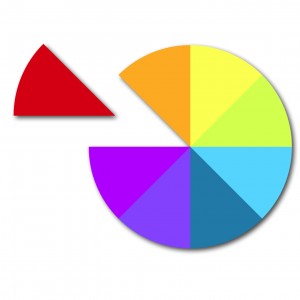Many artists have the same quandaries worthy of addressing here.
Although I wish I had simple pat answers to help bail artists out of their quandaries, sometimes I just don’t.
What I can do is provide is a fresh perspective.
quandary:
Hi Ann,
Would you be willing to describe how you priced your paintings when you just started selling? Or how would you price them if you were starting now?
I assume that since you were offering unique value, a lot more went into it than just looking at similar artwork in art galleries.
Thanks very much for your support in helping us all thrive!
Cristina
the way out:
Dear Cristina and (Artists Who THRIVE),
When I started selling my paintings, I was just selling paintings.
So, I did what artists do.
I looked around in art galleries and consulted with artist representatives to best determine comparable art and pricing. And this is a good place to start.
But those were the days when I was just selling art. Which, I do not recommend that you do.
What? Yes. You read that right!
The art establishment is cutthroat, over-saturated, incestuous, and nearly impossible to navigate.
There are a few rare exceptions but basically, it sucks.
“But Ann. Don’t you help artists increase their sales?”
Yes. I can.
And I can help artists increase their sales by helping them get out of the business of selling art and into the business of creating unique value above and beyond their art and selling that.
Do YOU like selling your art? Let me guess. “Ugh, no!”
Exactly. Who does?
So. You should stop selling your art, immediately.
Just for fun. I paid to have my paintings appraised by a very reputable certified art appraiser here in San Francisco. He was one of the most unprofessional and rudest consultants I have ever met. His office was in his dirty house. And during the time he was charging me he took a appointment with his damn plumber! I can’t make this stuff up. I have a strong feeling that my reception would have been much warmer if I was a collector rather than an artist, even though I paid him the same amount. But I digress.
He appraised my paintings for almost half of what I sell them for. Which in a strange way, amused and delighted me.
Because I don’t sell my art. I sell unique value above and beyond my art.
That unique value is called meaning. Traditional art appraisals do not, and they can not, measure meaning.
Why do I do this? Because the amount I can charge for my art is no longer tied to the pricing factors baked into the primary art market.
Because I sell unique value above and beyond my art, I can eliminate the competition and charge more. And so can the artists who I have mentored.
Please note. I said unique value.
As soon as you borrow your uniqueness from another artist, you are not unique. You are a just a copycat. Your art is irrelevant, uninteresting, and not so marketable. So, don’t do that.
Unless you are participating in the scarcity and permission based art establishment, you are free to state your price.
Prices, just like paintings, are made up.
And that is why pricing is not the first part of my eight part methodology. It’s way down the line as part of Realm #7, “Profiting.” You need to master the previous six realms before you get to the seventh.
Word to the wise. It’s better to start with lower prices than be forced to lower your prices. But do not underprice your work.
Test the market.
Just like making art, the skills required for selling art increase over time with experience. Eventually you will learn what the market will bare.






